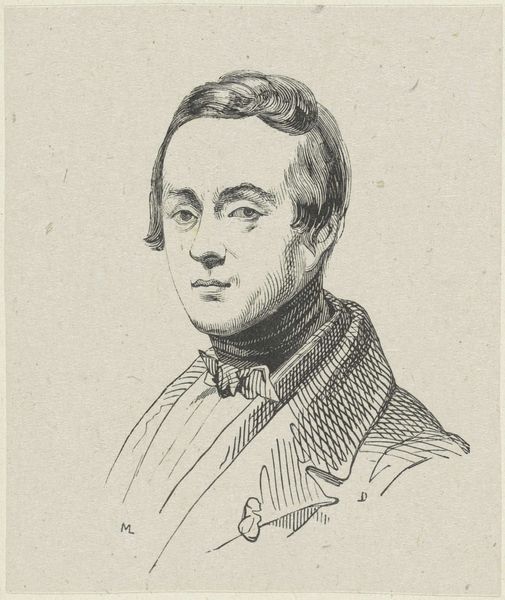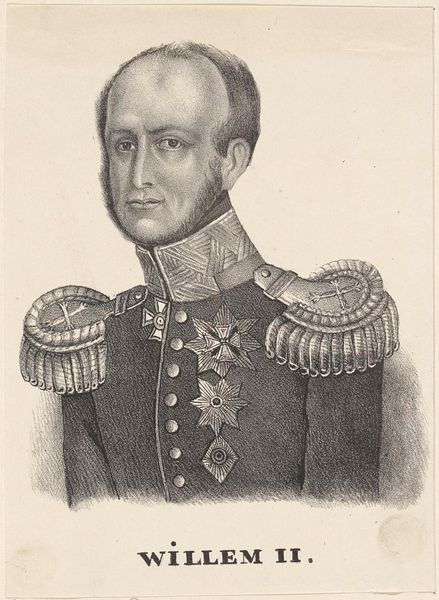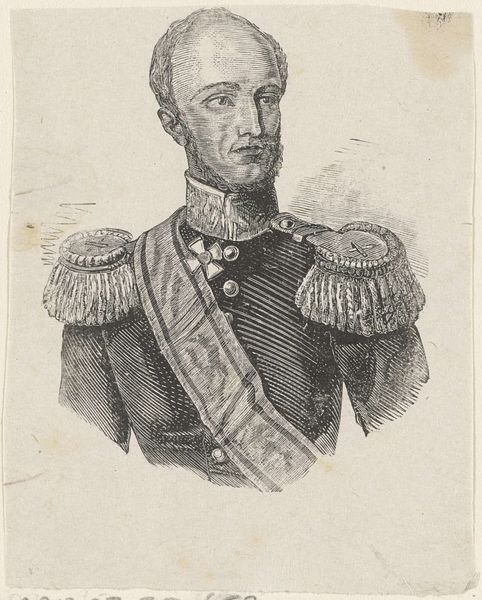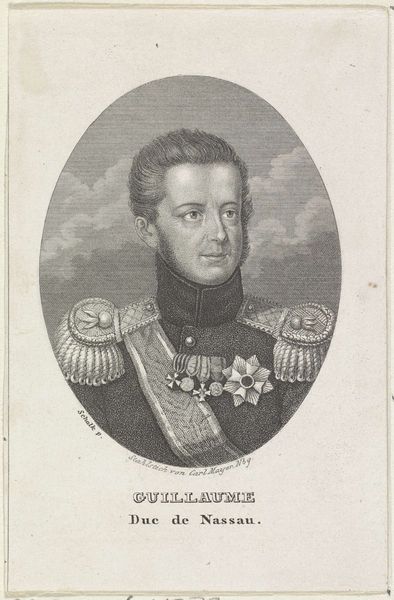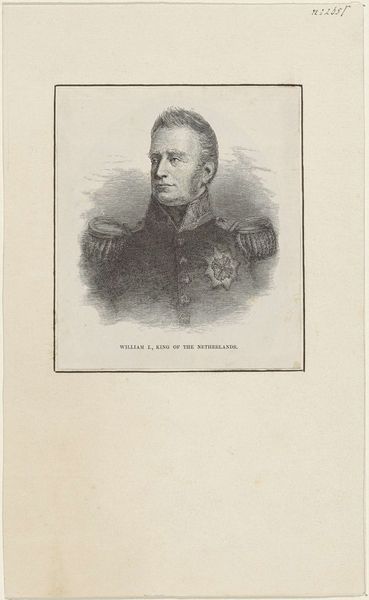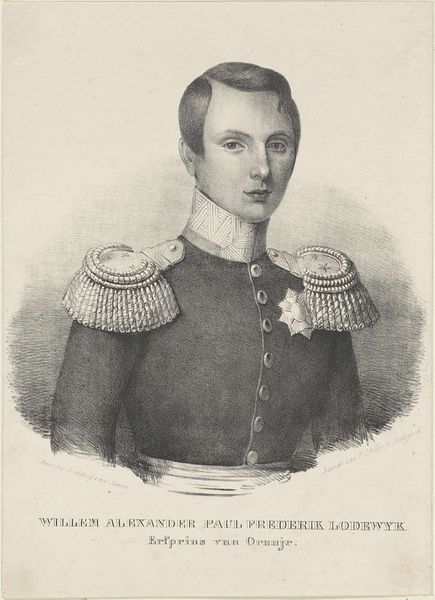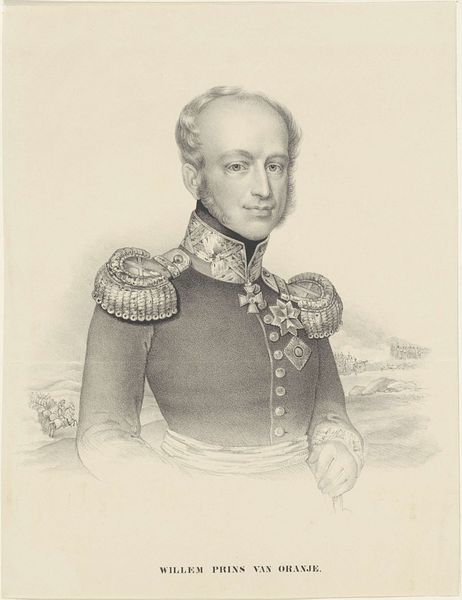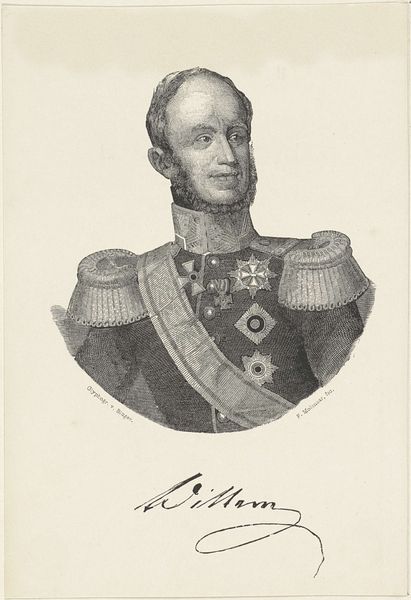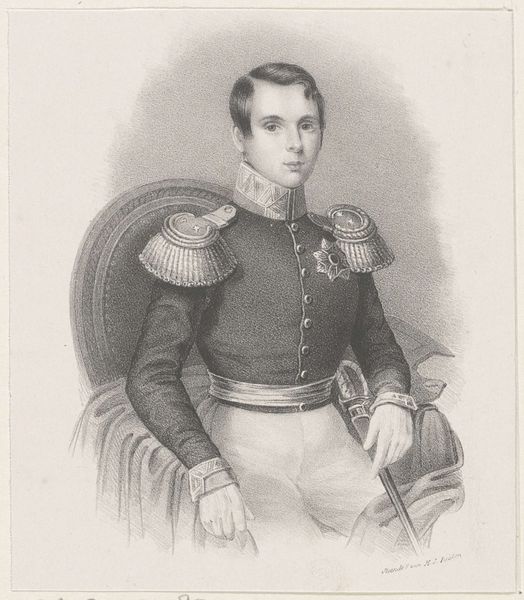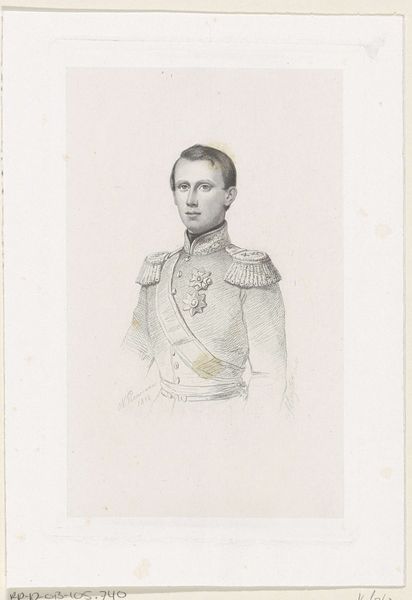
Dimensions: height 135 mm, width 92 mm
Copyright: Rijks Museum: Open Domain
Curator: Let’s take a look at this print. It's titled "Portret van Willem I, prins van Oranje," dating roughly between 1856 and 1949, by Emil Ost. What’s your first impression? Editor: Stark. I’m struck by the rigidity of the subject and the high contrast, almost austere rendering despite the historical dress. Curator: Yes, the engraving creates that effect. It's a reproduction, as indicated, based on a portrait in the gallery in Cassel, rendered by D. van der Kellen Jr. The choice to create an engraving speaks to a desire to democratize the image, making it widely accessible. What’s particularly interesting is thinking about its function during its creation period and now. Editor: Absolutely. Consider the labor involved in this medium: the craft of engraving each line. It contrasts with today's reproduction processes. The materiality itself is also critical; it would have been circulated as a fairly accessible form. What materials would’ve gone into production in this specific engraving? Curator: Excellent point. Engravings like these were often reproduced in newspapers and pamphlets, contributing to the cult of personality around national heroes, specifically reinforcing dominant historical narratives around leadership, nationality, and sacrifice. It's critical to interrogate who this representation served at a specific historical juncture. Editor: Precisely. And that dissemination relies heavily on specific distribution networks: how would ordinary people come across this print? What are their economic implications, in terms of cost and value, within everyday life? We should look at similar portrait engravings: what kind of workshop and work were needed for this widespread print and the others of the time? Curator: Seeing these material considerations allows for a deeper understanding of its historical function, reminding us how images aren't simply representations, but tools actively shaping public memory and national identity. Editor: Indeed, we should also analyze how it participates and shapes current memory about this leader and national values—understanding the power inherent to reproducible media. Curator: It allows me to question what the artist wanted this historical persona to mean. Editor: Absolutely! Thinking about materials also opens new doors for questions and meanings.
Comments
No comments
Be the first to comment and join the conversation on the ultimate creative platform.
